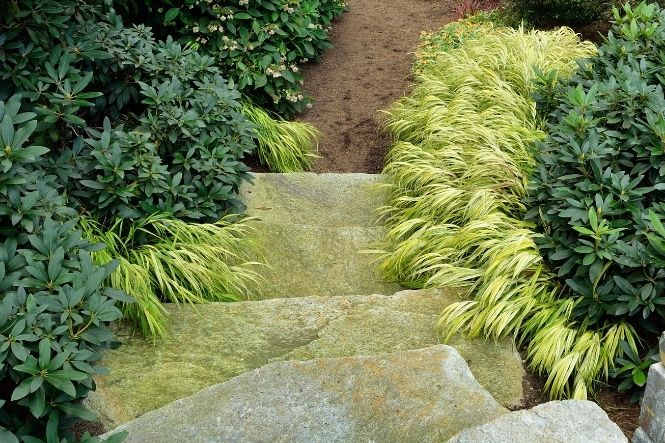Often when building a drive for your home it will incorporate new or replacement paths to the front door, from the home to the garage and perhaps up to a garden gate, depending on the layout of the house. If you’re Planning To Turn A Front Garden Into A Drive, it’s quite likely you will include one or two paths within the driveway area.
Separate Project or All In One?
In situations like these, it often makes sense to make the whole area one layout, so you only have one drive laying operation. This will mean that the area designated as path rather than driveway will be massively over-built for foot traffic, but the job will be all over and done with in a shorter time, as the same materials and construction techniques can be used for the whole project. This will make it cheaper overall, too.
If there are long, narrow paths leading away from the drive area, then that’s when it makes sense to treat them separately, as there will be savings to be made from buying fewer base and bedding materials and perhaps cheaper surface materials. You may also want to contrast the pedestrian paths from the drive areas by using different laying patterns or materials.
Less Stringent Standards for Paths
With most drive construction techniques and materials the specifications for footpaths are lower than for drives, where the foundations and surfaces have to withstand cars being driven onto them and parking for a number of hours. Take, as an example, the Laying Of Basic Flags, the larger square or rectangular stone or concrete slabs that are common in pavements around the UK.
To lay these for a driveway to a professional standard you would need to dig down to at least 20cm (about 8in), half that for a path or patio. For the sub-base, a drive will require 10cm (4in) of well crushed and levelled hardcore (or an appropriate cement and mix), then a bedding layer of 3.5- 5cm (1.5-2in) of sand before laying the flags. A path will not need a sub-base, just a 3.5-5cm (1.5-2in) bedding layer of cement will suffice, with the slabs laid directly onto it. There’s no real need for a professional edging course to hold the sideways spread of the foundations either.
Surface Choices
This means that lighter or thinner blocks can be used, widening the choice of materials to an even more bewildering multitude than for drives. For low foot traffic areas, blocks can be laid down with the minimum of bedding and foundation work. Don’t be tempted to just put flags or other blocks straight down on grass as stepping stones, as they will settle unevenly, look bad and may even lead to stumbles.
As well as hard surfaces such as stone, concrete or clay blocks and bricks, there are loose materials such as gravel and other stones, or perhaps shredded tree bark. Gravel and other loose aggregate materials have become very popular for low-maintenance gardens, particularly with the increase in buy-to-let properties. The is because tenants are considered unlikely to spend time keeping gardens and paths in the same condition as someone who owns and cherishes a house. Shredded Bark gives a surface that is kinder to the trips and falls of childhood, so is popular in households where there are younger children.
Sitting in between those two extremes are firm but yielding surfaces such as wood, very popular these days in the form of decking and steps, but not really practical for paths unless they are raised above the ground or used to bridge between levels.

